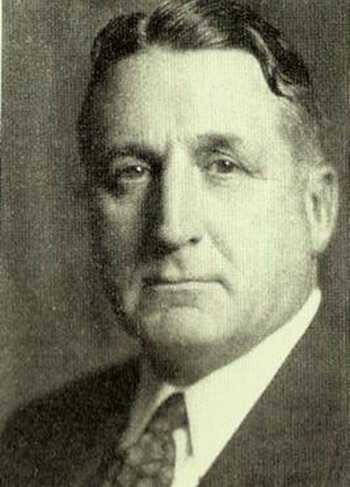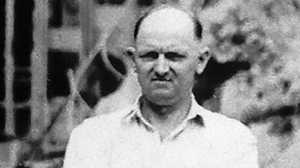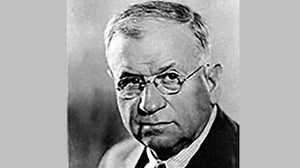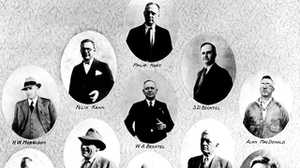Gordon Kaufman

Hoover Dam, in addition to being, at the time, the largest dam the world had ever seen, was conceived to trumpet man’s dominance over the forces of nature. In envisioning the architectural presentation of the dam, its designers wanted to make an impression of technological supremacy. To accomplish this task they turned to a Southern California architect of English descent named Gordon Kaufmann.
Kaufmann had established a name for himself for the work he had done in the moderne style. After reviewing then putting aside the early renderings of the Bureau of Reclamation engineers, replete with classical ornamentation, Kaufmann set out to create “a visual scheme that would complement rather than clash with the engineer’s design.” Through his work, Kaufmann transformed the dam’s utilitarian concrete surfaces into modern art deco designs. Recognizing that the dam’s broad, curving, downstream face was its dominant feature, Kaufmann chose to play upon its monolithic appearance by keeping it free of adornment. His design emphasized the power exuded by the structure.
Kaufmann redesigned the dam’s powerhouse at its base with shiny horizontal aluminum fins for windows. The dam’s spillways were also designed with the mantra of “form follows function” in mind. Their smooth, curving surfaces played up the whole streamlining effect. From the outside, the clean lines and shiny surfaces of Hoover Dam lent a space-age feel to this monument of industrial might.
Kaufmann recruited Alan True to design the distinctive floor patterns and color schemes that adorn the interior of the powerhouse. A competition, under Kaufmann’s supervision, was held to choose a designer of a monument commemorating the dam’s construction. Oskar J.W. Hansen, who had designed the ornamental elevator tower panels, emerged as the winner. His monument consisted of two, 32-foot-tall winged figures, made of bronze, and was called “Winged Figures of the Republic.”
The monument’s terrazzo floor, which paid homage to the Native American heritage of the surrounding land, holds a celestial map pinpointing the precise astronomical time—September 30, 1935, 8:56 p.m.—when President Franklin Roosevelt dedicated the dam.







